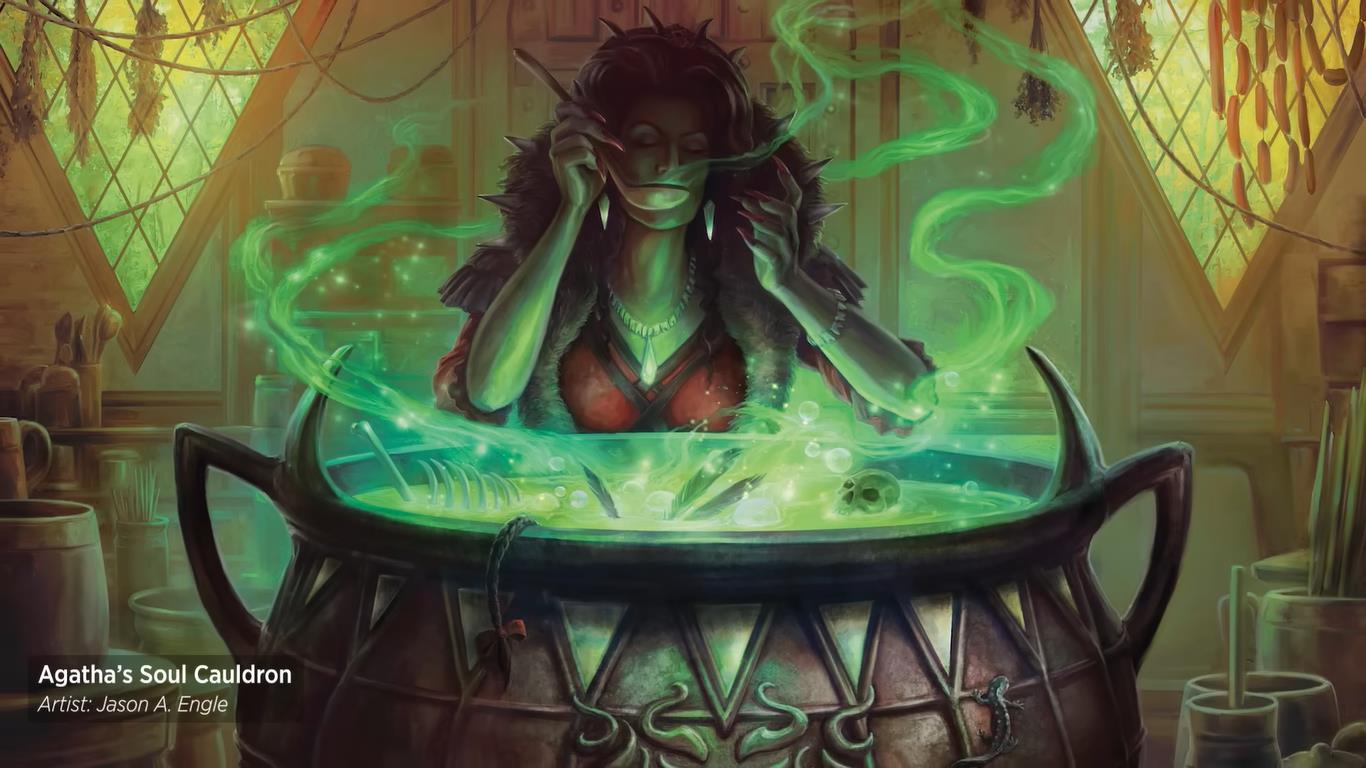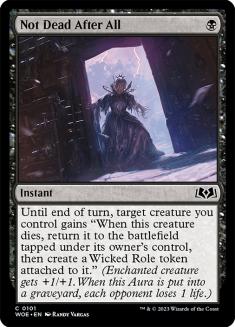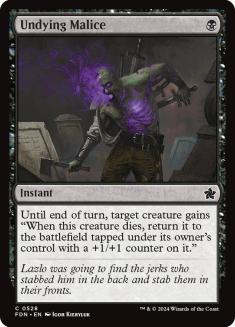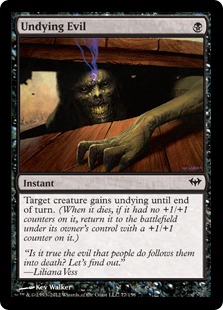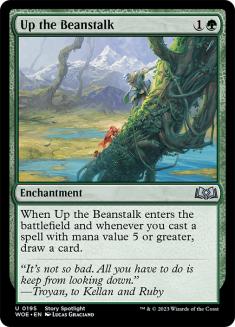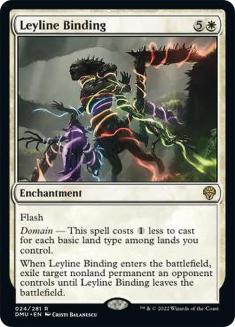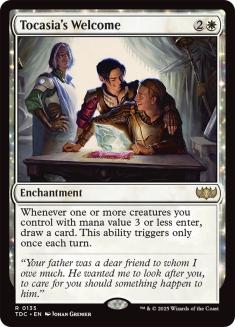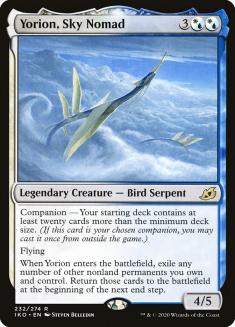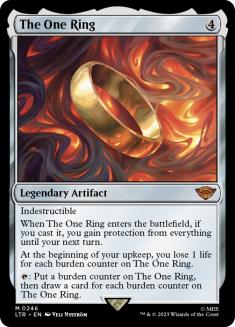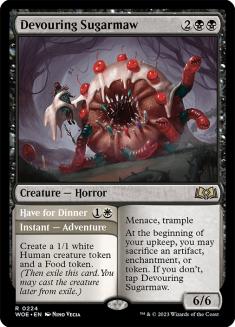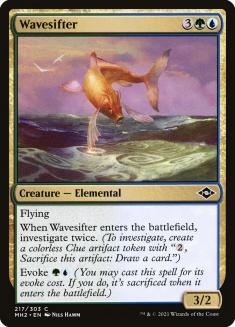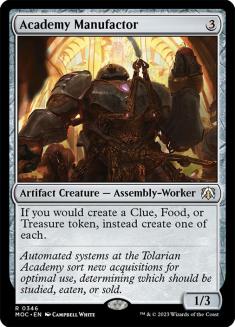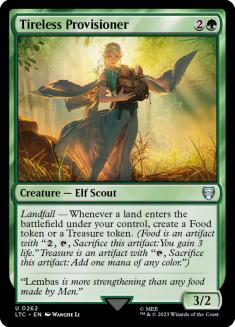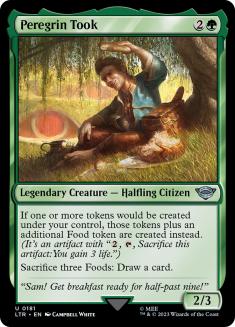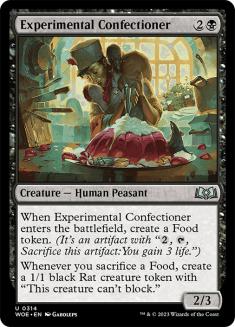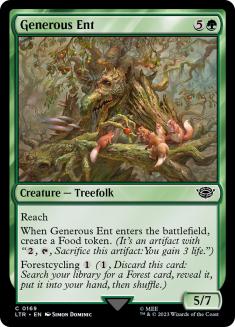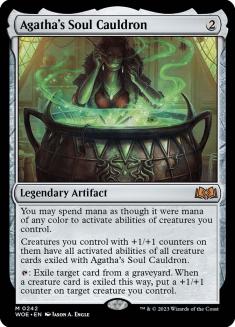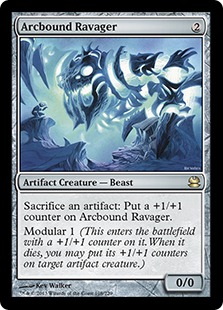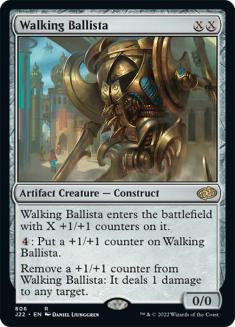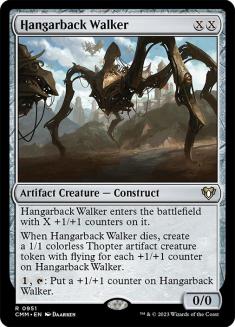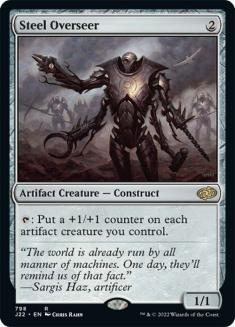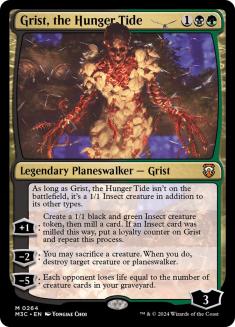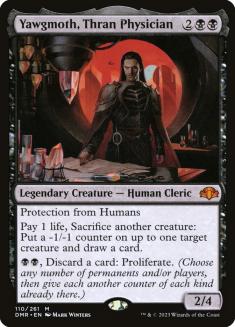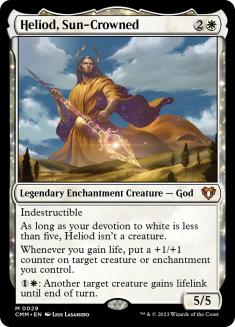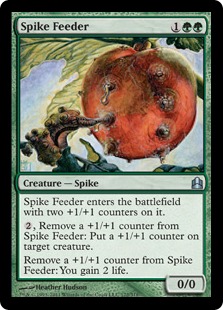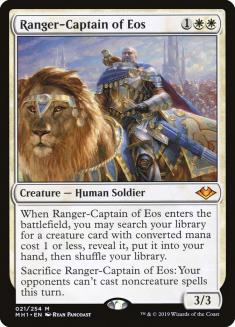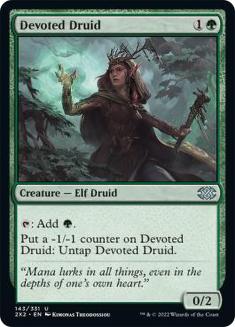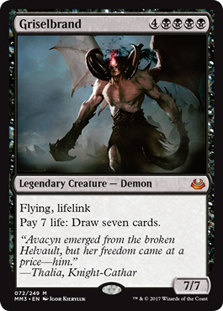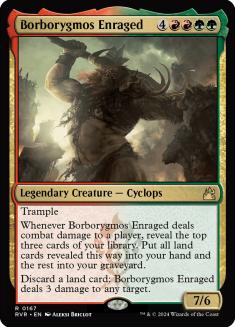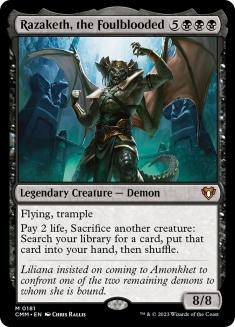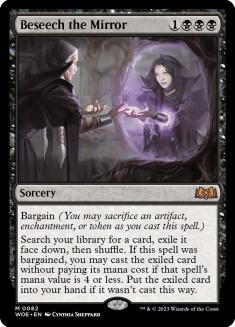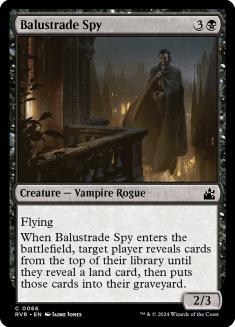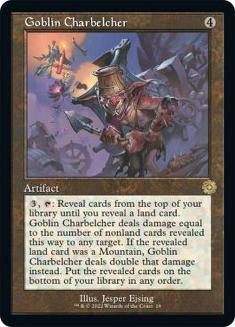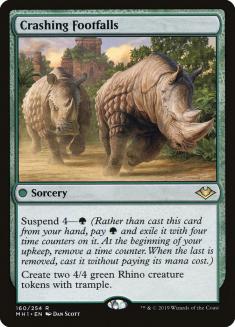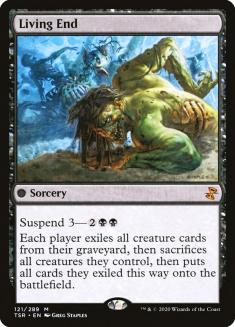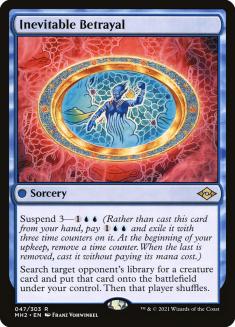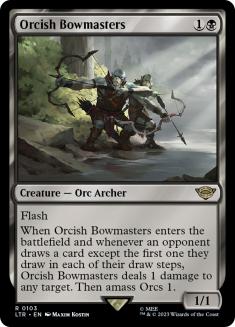Wilds of Eldraine doesn’t have the obvious game-changers that were unleashed on our first visit to Eldraine, but it has its share of cards that get the wheels turning. Its impact is distributed differently between formats. Oko, Thief of Crowns was the best card in the set and in any format where it was legal – here, it’s hard to place your bets without knowing which format you’re exploring first. My Pioneer picks for next week are a world apart from the weird and wonderful possibilities on offer in Modern.
Let’s start with a safe one.
Not Dead After All
There are too many versions of Feign Death to count by now – almost enough to let Rakdos Evoke reach the usual six-ish copies without any duplicates! If you enjoy debating deckbuilding minutiae, this is the segment for you. Undying Evil returns the creature to the battlefield untapped, letting it block Ragavan or another haste creature, but the undying ability only kicks in if there’s no +1/+1 counter already, leading to an awkward tension with Undying Malice and Feign Death. Not Dead After All does essentially the same thing but avoids this technicality, letting you unlock the minor upside of Undying Evil…
I can’t take it anymore. Anything else, please!
Up the Beanstalk
The false advertising that lets the Cascade decks field a full roster of free spells like Force of Negation and Fury also makes Up the Beanstalk enticing in Modern.
Conveniently, the Evoke Elementals that Four-Color Control is most interested in are the ones that can shoot Up the Beanstalk. They often are actual five-drops here – following Omnath, Locus of Creation with a fetchland and using that land + the extra four mana to hard-cast Fury or Solitude is a brutal and common play pattern – but you still get the reward from Up the Beanstalk when you evoke Solitude early to stay alive or use Fury to stunt their development. Getting another card back makes throwing that card away to evoke more palatable.
A look at current Four-Color lists might temper that excitement. Solitude has been inviolate since the release of Modern Horizons 2, but more open-minded Omnath pilots at the Pro Tour identified that it wasn’t as essential or useful anymore. Some lists loaded up on Fury instead with a heavier red focus, but that has its own risks. The days of pairing a full set of Fury and Solitude with Risen Reef and Ephemerate are behind us for now. If you aren’t playing many of these cards in the first place, why bother climbing the beanstalk?
The saving grace for this card is that you don’t need to work hard for it. There are similar payoffs that let you draw a card when you meet some condition, but these ask a lot of you. You spend a card and some mana getting that on the battlefield, the first trigger only gets you that initial payment back, and you have to trigger it again just to start netting cards – and if you stop there, you’ve jumped through a lot of hoops for a Divination.
Up the Beanstalk gives you a card just for casting it, raising its floor and giving you more looks at the cards that will trigger it again. A Turn 2 Up the Beanstalk might help you hit that third land drop in the short-term and give you another card or two later on – a great return on that initial investment!
It also lacks that ‘once each turn’ clause that acts as a brake on anything dangerous or exciting. You can imagine a turn where you trigger this several times, digging into a Leyline Binding for that last scary threat… which also draws you another card!
If Yorion, Sky Nomad still ruled the roost in Modern, it would be the perfect partner in crime for this card, but those days are long gone. That pairing is still legal in Pioneer, though…
The biggest barrier to this idea may be the presence of The One Ring. Four-Color Control is built to harness the Ring’s full power and that doesn’t leave much room for another, more incremental card advantage engine in the short term.
Food Fights
Another trip to Eldraine means getting to tuck into the Food mechanic again. Gilded Goose and Oko, Thief of Crowns let that land in Modern immediately, but Oko is a ‘Food card’ in the same way that Golgari Grave-Troll is a +1/+1 counters card. Food fans had to wait until the feast offered by Modern Horizons 2 and the new wave of Samwise Food decks enabled by The Lord of the Rings: Tales of Middle-earth, but the enablers in those sets mean any new Food cards can hit the ground running.
This new haul is disappointing for the existing Food decks – nothing here will help bring Asmoranomardicadaistinaculdacar back to its former glory – but might enable something completely different.
Creatures (30)
- 4 Shardless Agent
- 1 Chatterfang, Squirrel General
- 1 Endurance
- 4 Academy Manufactor
- 4 Tireless Provisioner
- 4 Wavesifter
- 2 Peregrin Took
- 4 Generous Ent
- 4 Devouring Sugarmaw
- 2 Experimental Confectioner
Lands (23)
Spells (7)

Glimpse of Tomorrow is a thrilling deckbuilding puzzle that you can approach any number of different ways. There’s an exciting treat for the deck in this set that you’ll miss unless you know to look for it.
Nobody wants to play Wavesifter – it’s simply the best way of generating multiple permanents ahead of a Turn 3 Glimpse without clashing with the cascade restriction. The Adventure mode on Devouring Sugarmaw offers another way to get there, either alongside or instead of Wavesifter. This different spread of tokens has its tradeoffs – the 1/1 token can be killed to reduce your permanent count but can also jump in front of Ragavan or some other attacker – but you can now plan around having one of these effects on Turn 2 in most games.
Tireless Provisioner showed up in the first Glimpse decks as a way to generate more permanents and make more mana for the follow-up Glimpse, but its Food production was an afterthought. Here it gains a new lease on life as a highly synergistic combo piece.
With so many ways to create Food (including a fetchland or Generous Ent for Gingerbread Cabin with enough Forests) and gain other rewards for creating Food, you flood the battlefield with rectangles that give you whatever resource you lack. You can use your Treasures to crack your Clues to find the next cascade spell for an even bigger Glimpse; if your life total is under pressure, you can devour your Food to give yourself a buffer.
Experimental Confectioner gives you an infinite loop with Peregrin Took to build towards. If you sacrifice three Food to Peregrin, you create three Rats, which each bring a Food thanks to Peregrin, putting you back at the starting state but with another card and creature.
I mentioned that Generous Ent helped to revive my interest in Glimpse ahead of the Pro Tour and had big structural benefits in the deck – and that was before I had any reason to care about Food synergies!
Eldraine’s other combo enablers are much more open-ended.
Agatha’s Soul Cauldron
Before we get into the more mind-bending applications, note that this card does a bizarre impression of Unlicensed Hearse. Graveyard synergies and dedicated graveyard decks are everywhere in Modern, and your combo piece doubling as graveyard hate is a welcome freeroll there.
This ability theft is symmetrical too, creating the potential for some bizarre battlefield states. Figuring out how to turn your opponent’s Yawgmoth, Thran Physician against them on the fly is a unique puzzle!
Hardened Scales all-stars Arcbound Ravager and Walking Ballista are excellent with Cauldron, which in turn pairs nicely with your Scales effects. Keen eyes will note that these cards all effectively cost two mana – a trait shared by even more Scales staples like Ozolith, the Shattered Spire and Patchwork Automaton, as well as other strange synergy enablers like Throne of Geth or Power Conduit. This shell is, to put it as nicely as possible, ‘compatible with Lurrus of the Dream-Den’.
Grist, the Hunger Tide counting as a creature allows for strange interactions yet again. When Grist is exiled by Cauldron, all your creatures with +1/+1 counters can activate the loyalty abilities of Grist (just the +1 ability at first as they start with zero loyalty, but maybe the others eventually) to churn out Insect tokens and fill the graveyard for the next Cauldron stir. There’s an infinite combo here with Metallic Mimic, but this requires a lot of moving parts and otherwise weak cards like Mimic. Using this synergy in a fair context is enough.
Yawgmoth’s ability is worth building your whole deck around, but removal can still interfere with Yawgmoth itself – unless it’s stewing safely in the Cauldron. You can set up some highly elaborate combos with undying creatures, but these should be a theoretical option rather than the focus of the deck.
We can build a list from scratch that combines some of these themes:
Creatures (30)
- 4 Carrion Feeder
- 2 Strangleroot Geist
- 4 Young Wolf
- 4 Walking Ballista
- 4 Yawgmoth, Thran Physician
- 4 Ravenous Squirrel
- 4 Ignoble Hierarch
- 4 Orcish Bowmasters
Planeswalkers (4)
Lands (22)
Spells (4)

There are enough synergies and outright combos here that going through them all would require its own piece, but the obvious ones alone are enough to pique my interest.
How about another creature combo deck that used to rule Modern? Cauldron can let anything become a Spike Feeder or Walking Ballista and can threaten a lock with Ranger-Captain of Eos.
Don’t get your hopes up with Devoted Druid. Putting a -1/-1 counter on your creature to untap it will cancel out the +1/+1 counter and remove any abilities granted by Cauldron. The biannual Devoted Druid comeback tour will have to wait for now – Tyvar, Jubilant Brawler made a valiant attempt at least.
I’ve played Necrotic Ooze with Griselbrand to success before in Modern, and I’d love to relive those glory days (or maybe just be back in my early twenties…). Goryo’s Vengeance is one of the most powerful cards in Modern, but lacks redundancy; Cauldron does a decent impression of it with the right setup and targets.
Beseech the Mirror
Beseech the Mirror is the most exciting card in a long time for combo enthusiasts, but its power is heavily format-dependent. In Standard, it’s a fair card ensuring more reliable access to other fair cards. In Legacy and Vintage, it fuels thrilling combo chains that win the game on the spot.
Modern lacks the fast mana and combo payoffs that you want to chase in older formats – there’s no Chrome Mox or Mox Opal to bargain or Tendrils of Agony to find – but it still lets you make mischief if you get creative.
The most immediate home is Oops All Spells, which already used artifact ramp like Talismans and Pentad Prism and needs more redundancy on its key combo piece in Balustrade Spy and best backup plan in Goblin Charbelcher. Space is tight, but some copies of Beseech and additional artifacts like Mishra’s Bauble are worth a try.
Beseech offers a whole new way to drop your free suspend cards without warping your mana curve and ignoring the usual cheap cards. Crashing Footfalls isn’t worth it at four mana, but Living End is an incredibly powerful effect, especially when you have the entire card pool of creatures at your disposal.
You can imagine a dedicated Reanimator deck like this:
Creatures (25)
- 4 Street Wraith
- 4 Stitcher's Supplier
- 4 Grief
- 4 Archon of Cruelty
- 1 Sheoldred, the Apocalypse
- 4 Orcish Bowmasters
- 4 Troll of Khazad-dum
Lands (20)
Spells (15)

How about an Asmo package that uses the enablers already in the deck and offers a lifetime supply of expendable artifacts and tokens?
Creatures (22)
- 4 Street Wraith
- 4 Grief
- 4 Asmoranomardicadaistinaculdacar
- 2 Sheoldred, the Apocalypse
- 4 Orcish Bowmasters
- 4 Troll of Khazad-dum
Lands (20)
Spells (18)

Artifact lands like Vault of Whispers are out of bounds in Modern, but the game’s only enchantment land makes a valid bargaining chip for Beseech as well as a plan to pivot towards when your intended nonsense is off the table.
Orcish Bowmasters needs no introduction or explanation by now, but it’s easy to overlook that the Army token can be sacrificed to bargain.
In many positions, all you want to do is resolve The One Ring – and, once you have, the card you most want to draw into is another copy. Beseech makes both sides of that equation easier to balance and crucially has you ‘cast’ Ring, granting you another turn of protection.
These Living End decks have a flavourful single copy of Ring as part of a small Beseech toolbox, but you can lean much harder on both this card and this approach to Beseech.
Creatures (6)
Lands (24)
Spells (30)

Once the main incentive to play a deck like this, Urza, Lord High Artificer himself is now showing his age. Access to Urza is important for the infinite combo with Thopter Foundry and Sword of the Meek, but it can be a clunky or conditional card otherwise. Beseech gives you four more virtual copies of Urza but can default to being your next The One Ring – or Sheoldred, the Apocalypse when that’s the four-drop of choice.
There’s some concern that Wilds of Eldraine is an overcorrection to Throne’s obscene power level, but this is a better problem to have – and I hope to have a lot of fun trying to silence those doubts.

